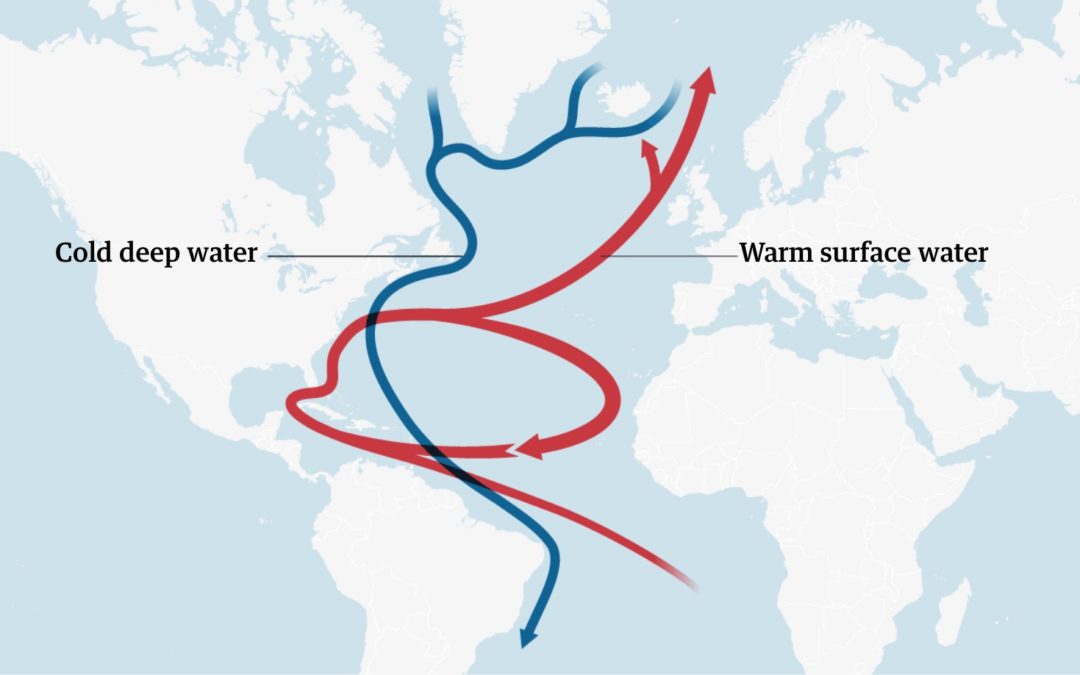As the supposed work-week comes to end, another non-news dump piled up on a Friday without much major damage, other than the shit which burns through every day-in-and-day-out — welcome to the day before a dumbbell weekend. Shitting across the news cycle is the crazy circus, or CPAC, thus started today and will run-on itself through the next two days with the T-Rump expected to take the podium and blubber on Sunday.
A toxic waste…
Reality behind all the news clips remains climate change and how it’s quickly forcing the planet to a “tipping point,” where we’ll be fucked no matter how hard we try — and now today, an UN “Red Alert” notice for nations of the earth, especially the high polluters, to get their shit together:
? #EUAdaptationStrategy ???
Even if we cut all emissions today, #ClimateChange wouldn’t go away.
We need to adapt to the changes happening now & plan for the future to prevent & limit the damage it can cause.
This is our plan to get there??https://t.co/F9Dp0Whj5x#EUGreenDeal pic.twitter.com/no13eWzGK0— EU Climate Action (@EUClimateAction) February 24, 2021
UN Secretary-General António Guterres called for a swift kick upward: ‘“It shows governments are nowhere close to the level of ambition needed to limit climate change to 1.5 degrees and meet the goals of the Paris Agreement…The major emitters must step up with much more ambitious emissions reductions targets.”‘
In pledges for cuts to emissions required per the Paris Accord, as it stands now, will not be enough to curb global warming — current rates will only achieve a 1-percent cut while actually a 45-percent global reduction is needed. The UN report doesn’t paint an encouraging picture — details at Gizmodo this afternoon:
Leading climate scientists are freaking out.
That’s a clear takeaway from the latest report commissioned by the United Nations Framework Convention on Climate Change (UNFCCC), the international body that represents the 197 signatories of the Paris Climate Agreement, which was released Friday.The study, called the Initial NDC Synthesis Report, measures countries’ progress on their Nationally Determined Contributions (NDCs), or their plans to meet the Paris Climate Accord’s goal of keeping global temperature rise “well below” a 2-degree Celsius (3.6-degree Fahrenheit) increase over pre-industrial levels.
Those pledges, the authors write, fall far short of the transformative changes needed to stave off the worst impacts of the climate crisis.Countries’ updated NDCs were due to the UNFCCC by the end of 2020.
Most countries missed that deadline, including the world’s top carbon polluters: China, the U.S., and India.
But 75 member countries representing about 30-percent of global emissions did submit new plans, updating their climate goals and boosting their commitments to cut greenhouse gas emissions.
…
UN scientists have issued many urgent climate reports before.
But in the latest report, the call for action reaches a fever pitch.“Today’s interim report from the UNFCCC is a red alert for our planet,” UN Secretary General Antonio Guterres said in a statement.
If the world has any chance of meeting the 1.5-degree Celsius goal, he said, 2021 will be a “make or break” year.
In nearly-direct contex to the UN announcement and an example of our heating environment has to do with something most of us never come in contact with — ocean currents.
Especially the Atlantic Meridional Overturning Circulation (AMOC), which transports heat from the tropics to the Northern Hemisphere, warm surface water from the Gulf of Mexico towards the north Atlantic. A most-vital system in maintaining ‘normal’ weather/climate functions.
 (Illustration found here).
(Illustration found here).
New research indicates the vital AMOC could run out of flow faster than earlier predicted, which could, for instance, create a weakened Gulf Stream raising sea levels on the Atlantic coast of the US. The study also indicates the AMOC is currently considered “in its weakest state in over a millennium,” a precarious perch since the AMOC has been appraised as the “Achilles’ heel” of the climate system. The study was published in PNAS.
Implications of this AMOC downward spiral from ScienceAlert yesterday:
That could have profound, large-scale impacts on the planet in terms of weather patterns, upending agricultural practices, biodiversity, and economic stability across the vast areas of the world that the AMOC influences.
The problem is the rate at which Earth is warming up and melting the ice in the Arctic: according to the researchers’ new models, this speed of temperature increase means the risk of hitting the tipping point for the AMOC going dormant is now an urgent concern.
“It is worrying news,” says physicist Johannes Lohmann, from the University of Copenhagen in Denmark. “Because if this is true, it reduces our safe operating space.”
…
In other words, the speed at which we’re pushing out greenhouse gases and melting ice in Greenland is leaving us with very little room to manoeuvre when it comes to protecting the climate systems that keep global weather patterns in check. The same problem could threaten other climate sub-systems across the world too, the researchers say.“These tipping points have been shown previously in climate models, where meltwater is very slowly introduced into the ocean,” Lohmann told Molly Taft at Gizmodo. “In reality, increases in meltwater from Greenland are accelerating and cannot be considered slow.”
…
“Due to the chaotic dynamics of complex systems there is no well-defined critical rate of parameter change, which severely limits the predictability of the qualitative long-term behaviour,” write the researchers in their paper.“The results show that the safe operating space of elements of the Earth system with respect to future emissions might be smaller than previously thought.”
Now back to the shit from right now…and its consequences:
And so it goes…
 (Illustration found here).
(Illustration found here).
One thought on “Earth Still Not Working Hard Enough On Climate Change”